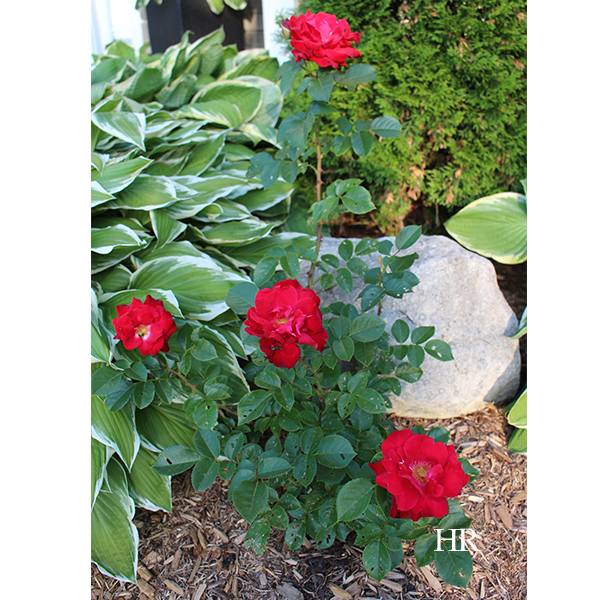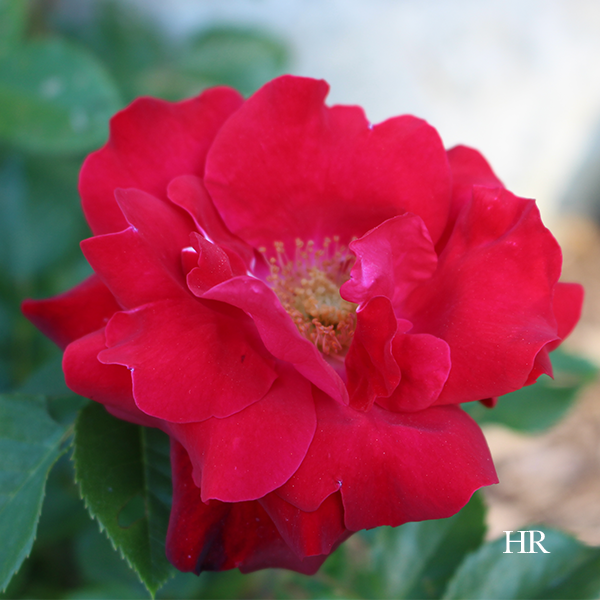Roses: Rosa Hybrid Ten-Ten Hybrid Tea Rose
Written by H, Posted in Gardening
It’s no secret that Wes and I are big fans of roses. This Summer, we picked out three rose varieties to plant in our garden. I’ve already shared with you about our white Bolero Floribunda roses and our Singin’ in the Rain Floribunda roses, and today we’re talking about our Ten-Ten hybrid tea roses.
Initially, we picked out the best looking rose bushes we could find, meaning, the rose bushes were showing promise of new growth, and the leaves looked healthy. We planted the bushes the day we purchased them, making sure to pack the plant down with our feet and give it a good watering after establishing it in its new home. We chose our front garden as it gets 6+ hours of sunlight each day (rose bushes require full sun), and we planted each of our three rose plants in an area where the moisture from watering would hold (each is stationed near a large stone).
One of the things to look for when you’re shopping for garden plants is new growth. Our Ten-Ten hybrid tea roses had one partial bloom and several buds (as pictured above).
As you can see, without any fertilization at all, our red tea roses produced several large, beautiful blooms. What you can also see in the photo above is that we did run into a minor setback with saw fly larvae. To solve this problem, Wes killed all the worms (you can also buy plant soap for a bath, or just use some Dawn soap diluted with water). We trimmed back the bushes, and fertilized, and then we were back on track.
Characterized by large, lovely blooms, hybrid tea roses are apparently the oldest group classified as a modern garden rose. There are many different varieties, however we’re loving these Canadian grown red beauties. They add a beautiful pop of colour to our front garden.
Before fertilizing your roses, I’d highly recommend trimming back the plant. After the first of our ten-ten hybrid tea roses had bloomed, we trimmed back the entire rose bush, used Miracle Gro, and the above photo is the result after a couple of weeks. The roses grow back stronger, with longer stems, and with larger blooms (also several more blooms than when we planted the rose bush initially).








![False friends or counterfeit kindness; whatever you want to call it, the world is filled with people who will say one thing to your face and then another behind your back; people who will woo you in order to get something from you.
It’s sad, but it’s true.
The Bible provides us with examples from Joab to Judas, and yet, we’re surprised when we find ourselves deceived and hurt by someone else.
So what are some of the hallmarks of a true friend?
You can read more about this on hopereflected.com [Link in profile]
.
.
.
#friends #friendship #kindness #counterfeitkindness #hurt #proverbs #truefriends #hopereflected #blog #blogpost](https://www.hopereflected.com/wp-content/plugins/instagram-feed/img/placeholder.png)